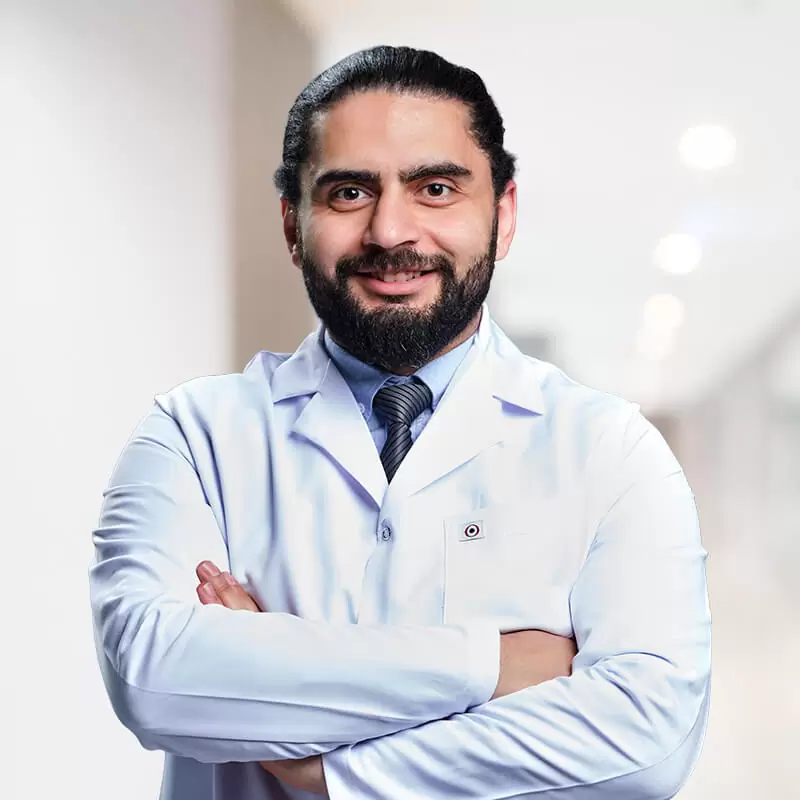What is an Epigastric Hernia?
An epigastric hernia occurs when fatty tissue or part of the intestine pushes through a weak spot in the abdominal muscles, specifically between the belly button and the lower part of the ribcage. This type of hernia often presents as a small lump or bulge in the upper abdomen and can vary in size. While some epigastric hernias cause little to no discomfort, others may result in pain, especially during physical activity or when straining.
Symptoms of an Epigastric Hernia
- A visible lump or bulge in the upper abdomen (between the navel and the breastbone)
- Pain or discomfort in the upper abdomen, especially when lifting, coughing, or straining
- Tenderness around the bulge
- A feeling of pressure or weakness in the upper abdominal area
- In severe cases, nausea or vomiting (indicating possible complications)
What Causes an Epigastric Hernia?
Epigastric hernias are typically caused by weaknesses in the abdominal muscles. Several factors can contribute to their development:
- Congenital (present at birth) weakness in the abdominal wall
- Repeated strain from heavy lifting or intense physical activity
- Obesity or significant weight fluctuations
- Chronic coughing or constipation
- Previous abdominal surgeries
- Pregnancy
How is an Epigastric Hernia Diagnosed?
An epigastric hernia is often diagnosed during a physical examination. Your doctor may feel the upper abdominal area while you stand, cough, or strain to detect the hernia. In some cases, imaging tests such as an ultrasound, CT scan, or MRI may be used to confirm the diagnosis and assess the size and severity of the hernia.

Let's help you!

Treatment Options for Epigastric Hernia
Surgery is the only definitive treatment for an epigastric hernia. Without surgical intervention, the hernia may grow larger and cause complications such as strangulation or obstruction.
1. Open Hernia Repair:
A small incision is made over the hernia site, and the protruding tissue is repositioned. The weakened abdominal wall is reinforced, often with mesh, to prevent recurrence.
2. Laparoscopic (Minimally Invasive) Hernia Repair:
This method uses small incisions and a camera to guide the repair. It typically results in less postoperative pain and a quicker recovery.
Which Surgical Method is Right for You?
The choice between open and laparoscopic surgery depends on factors such as the size of the hernia, your overall health, and any previous surgeries. At ELİT Clinic, our skilled surgeons will evaluate your condition and recommend the most suitable treatment plan tailored to your needs.
Recovery After Epigastric Hernia Surgery
- Hospital Stay: Most patients can return home the same day of surgery.
- Recovery Time: You can resume light activities within 1-2 weeks, with full recovery in about 4-6 weeks.
- Pain Management: Mild discomfort is common and can be managed with prescribed medications.
- Physical Activity: Avoid heavy lifting, strenuous exercise, and activities that strain the abdomen for at least 4-6 weeks.
Risks and Complications of Epigastric Hernia Surgery
While epigastric hernia repair is generally safe, there are potential risks associated with any surgical procedure:
- Infection
- Bleeding
- Recurrence of the hernia
- Chronic pain or nerve damage
- Scar tissue formation
Why Choose ELİT Clinic?
- Experienced Surgeons: Our team has extensive expertise in hernia repairs, offering both open and laparoscopic techniques.
- Advanced Technology: We utilize state-of-the-art equipment for precise, minimally invasive procedures.
- Comprehensive Care: From diagnosis to post-surgery follow-up, we provide personalized, patient-centered care.
- Faster Recovery: Minimally invasive techniques help reduce pain and speed up recovery times.
Frequently Asked Questions (FAQs)
Yes, surgery is the only permanent solution. Leaving the hernia untreated can lead to complications over time.
With laparoscopic surgery, scarring is minimal. Open surgery may result in a small scar, but our surgeons take care to minimize its appearance.
With proper surgical technique and postoperative care, the likelihood of recurrence is low.






